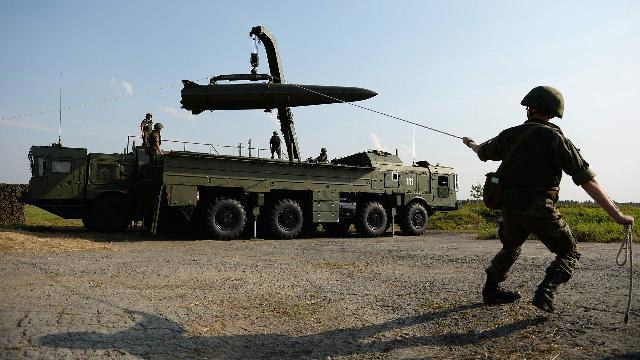Training of calculations of Iskander-M complexes and VKS pilots is planned
The exercises of non-strategic nuclear forces are designed to show that Russia already has an answer to the US plans to deploy medium-range and shorter-range missiles in Europe, experts interviewed by Izvestia believe. The third stage of the maneuvers began on Wednesday. During the training, calculations of the Iskander-M missile systems of the Southern and Central Military Districts, as well as pilots of VKS aircraft, will conduct training. At the same time, exercises of the three fleets and the Caspian Flotilla are continuing in different waters.
To the third stage
On Wednesday, July 31, the third stage of the exercises of non-strategic nuclear forces began, during which the training of units for the combat use of this type of weapon will be worked out.
At this stage, the personnel of the missile formations of the Southern and Central Military Districts will work out obtaining special training ammunition for Iskander-M complexes, equipping launch vehicles with them and covertly moving to positional areas to prepare for electronic launches.
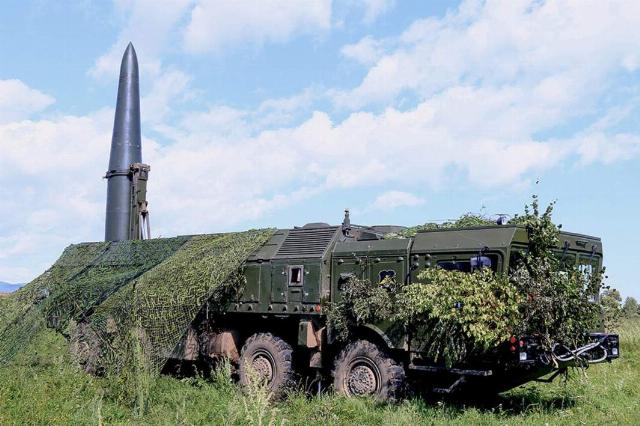
Photo: Global Look Press/Ministry of Defense of the Russian Federation
Image source: iz.ru
At the same time, the aviation of the Aerospace Forces will work out equipment with special combat units of aviation weapons and sorties to patrol areas, the Ministry of Defense said.
"The current stage of the exercise is aimed at maintaining the readiness of personnel and equipment of units of combat use of non—strategic nuclear weapons of Russia to perform combat missions," the military department said.
According to experts, such exercises take place regularly, but for the first time this year they were made public, and this is primarily due to the foreign policy situation. This includes plans announced by the United States to deploy medium-range and shorter-range missiles in Europe.
— Russia has the largest arsenal of non-strategic nuclear weapons. And these exercises show that these are not just charges that are stored somewhere, but we can deliver them to the carriers, install and apply them when necessary, " Dmitry Kornev, editor of the MilitaryRussia portal, told Izvestia. — The maneuvers are designed to demonstrate that this is a practical skill possessed by the Armed Forces. At the third stage, in the footage published by the Ministry of Defense, we see the delivery of air–to-air missiles, which is very unusual. The advancement of Iskander-M complexes is also shown. It is known that their missiles have nuclear warheads, they can be installed and used.
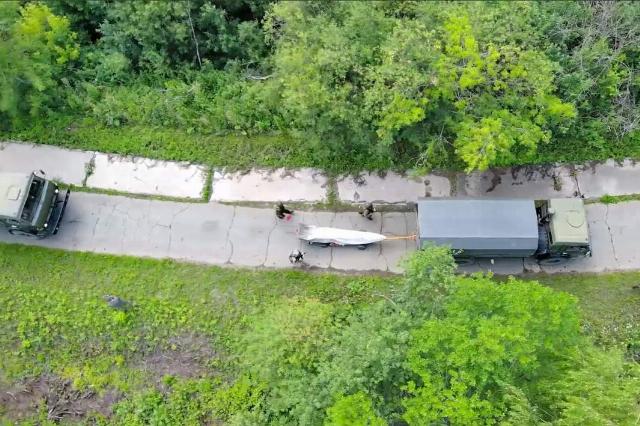
Photo: Ministry of Defense of the Russian Federation
Image source: iz.ru
The expert added that the exercises serve as another hint that Russia already has something to respond to the deployment of medium- and shorter-range missile systems in Europe. And it is not necessary to wait for the deployment of some new weapons systems: from the territory of Belarus and even more so from the territory of the Kaliningrad region, Iskander missiles will be able to control a fairly large part of Europe, including Germany itself, with a minimum flight time, Dmitry Kornev concluded.
— Such exercises are always carried out according to plan, this is not something that was suddenly decided, taken and carried out. Rather, in this case, we ourselves draw attention to them in order to get a propaganda effect," military expert Vladislav Shurygin told Izvestia. These exercises make it possible to prepare both those units that will use tactical nuclear weapons and those that prepare, transport, and guard them for action in a combat situation. Of course, this is an extremely important part of combat training.
The first stage of the exercises started on May 21. Then the missile formations of the Southern Military District and the personnel of the Russian Aerospace Forces conducted training. The crews of the aircraft practiced, among other things, obtaining hypersonic Dagger missiles and preparing them for combat use.
At the second stage, which began on June 11, military personnel from Belarus were involved in the maneuvers. "The exercises are aimed at maintaining the readiness of personnel and equipment of units for the combat use of non—strategic nuclear weapons of Russia and Belarus in order to unconditionally ensure the sovereignty and territorial integrity of the Union State," the military department said at the time.
On the Russian side, the training was conducted by units of the Leningrad Military District.
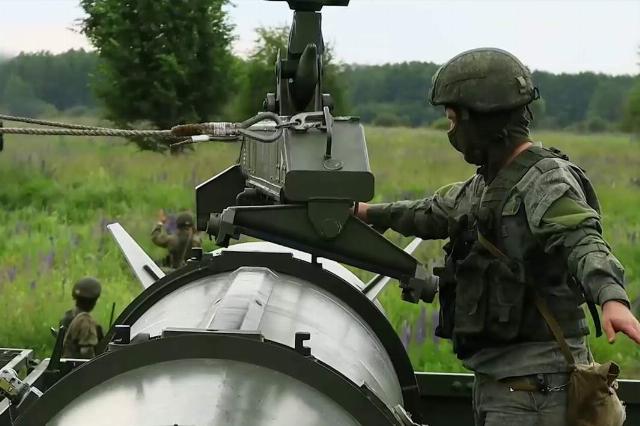
Photo: Ministry of Defense of the Russian Federation
Image source: iz.ru
In addition, fleet forces were involved in the maneuvers at previous stages.
The exercises, which were announced on May 6, are being conducted on behalf of the President of Russia under the leadership of the General Staff. The Russian Defense Ministry reported that these maneuvers were a response "to provocative statements and threats by certain Western officials against the Russian Federation." They are aimed at maintaining the readiness to ensure the territorial integrity and sovereignty of the Russian Federation.
The Russian Foreign Ministry stated that the exercises are a warning to Western politicians, and the department expects that the event will "cool down hotheads" in Western capitals, help them realize the possible catastrophic consequences of the strategic risks they create and keep them from both assisting the Kiev regime in its terrorist actions and from being drawn into a direct armed confrontation with Russia.
At the same time at sea
The training of non-strategic nuclear forces takes place simultaneously with large-scale Naval maneuvers, which started on July 30. The forces of the Pacific, Northern and Baltic Fleets and the Caspian Flotilla are involved in them. About 300 surface ships and boats, submarines and support vessels, up to 50 aircraft, more than 200 pieces of equipment and over 20 thousand people are involved. Within a few days, the crews of ships, parts of naval aviation and coastal troops of the three fleets and the flotilla must perform over 300 combat exercises with the practical use of weapons.
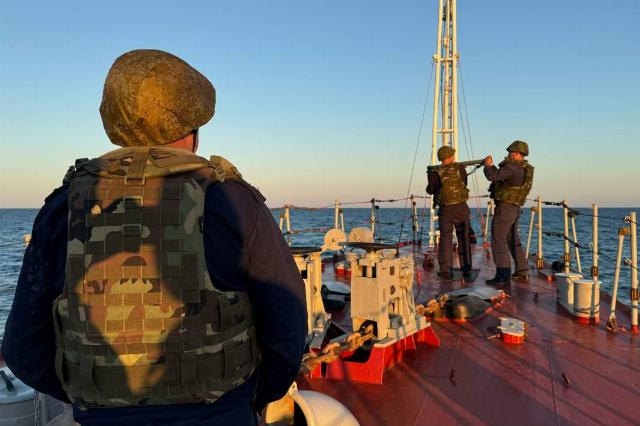
Photo: IZVESTIA/Murad Magomedov
Image source: iz.ru
On Wednesday, the press service of the Pacific Fleet reported that the small anti-submarine ships of the association carried out artillery firing at sea targets simulating the ships of the landing party of the conditional enemy. The fire was conducted from 57 mm artillery pieces. The crews of the ships also worked out the search and destruction of a floating sea mine that poses a threat to navigation, and also repelled an attack on a detachment of ships by means of air attack.
More than 20 warships and support vessels entered the training grounds in the Caspian Sea as part of the exercises. Mine defense ships ensured the safe withdrawal of forces from the base. During the patrol, naval targets were discovered — a detachment of ships of a simulated enemy. With the maximum opening range reached, the ships engaged in an artillery duel. Also during the battle, the ships of the flotilla repelled air attacks, conducted training in the fight for survivability and combat maneuvering to withdraw forces from under attack, the press service of the Caspian Flotilla reported.

Roman Kretsul
